Lower stamp duty land tax threshold in place until October
The stamp duty land tax-free threshold in England and Northern Ireland reduced last month, as the tax holiday introduced in July 2020 began to be phased out.
The first cliff edge for residential property buyers came and went on 30 June 2021, marking the end of a three-month extension announced on 3 March 2021.
Buyers who completed their purchases before last month’s deadline avoided having to pay this property tax on the first £500,000 of the property price.
The holiday enabled those who were able to complete their purchases before 30 June 2021 to save up to £15,000 on their stamp duty land tax bills, although others were not so fortunate.
Most of those who missed that extended deadline will now pay stamp duty land tax for residential house purchases above £250,000 for transactions completed on or before 30 September 2021.
Above this threshold, a 5% stamp duty land tax rate applies on the portion of the property price between £250,000 and £925,000.
For buyers of additional residential properties that are not their main residence, the 3% surcharge kicks in immediately.
First-time buyers, who also benefited from the stamp duty holiday, now pay tax on properties worth more than £300,000.
A 5% tax rate applies between £300,000 and £500,000, although these entitlements are lost when first-time buyers purchase a property for more than £500,000.
Talk to us about property taxes.
Employer costs increase as furlough scheme winds down
Employer contributions towards furloughed workers’ wages have increased again, as the furlough scheme prepares to close for good on 30 September 2021.
Officially introduced at the start of the pandemic in March 2020, the scheme has supported around 11.6 million jobs in the UK to date at a cost of £66 billion.
For most of that time, the scheme has paid 80% of the wages of people who couldn’t work, or whose employers could no longer afford them, up to £2,500 a month.
While that £2,500 cap remains in place until the scheme closes, employers’ costs started to increase last month.
From 1 July 2021, the Government’s contribution reduced from 80% to 70%, while employers were asked to pay 10% of furloughed workers’ salaries, ensuring workers will not notice the difference.
For August and September 2021, employers will pay 20% as the Government contributes 60%.
The Government hopes that by making it more expensive for employers to furlough workers, they will opt to take workers back full-time if they can afford to do so.
Throughout the pandemic, employers using the scheme already have to pay workplace pension and National Insurance contributions on their workers’ behalf.
The Institute for Fiscal Studies said the bill for employers keeping a member of staff on furlough rose from £155 a month in June, to £322 in July and £489 in August and September.
Speak to us about managing costs.
Treasury seeks feedback on business rates revaluations
Business rates revaluations in England could take place every three years, following the launch of a recent consultation.
The latest consultation forms part of a comprehensive review into business rates in England, with a report due to be published in the autumn.
Business rates are similar to council tax for business properties in England. They are paid by businesses, or landlords if a property is empty.
How much they pay is based on open-market rental values which are determined by the Valuation Office Agency every five years.
These revaluations result in new rateable values being given to all business properties in England, and revisions to the two business rates multipliers.
The last revaluation was in 2017, based on rents in 2015. The next one is due in 2022, subject to the outcome of the autumn report.
The Government is consulting on making business rate revaluations every three years, “ensuring they better reflect changing economic conditions”.
Jesse Norman, Financial Secretary to the Treasury, said:
“Proposals set out in this consultation would mean that valuations more quickly reflect how the economy is performing.
“This would make the business rates system [in England] more accurate and responsive, while balancing the burden for ratepayers.”
The consultation has been well received by business groups, including the British Retail Consortium which has called for more frequent revaluations.
Helen Dickinson, chief executive at the BRC, said:
“This should be the first step towards making the business rates system [in England] fairer and more reflective of current economic conditions.
“As retail emerges from the pandemic, a return to ‘business rates-as-usual’ could derail the industry’s recovery, with unnecessary shop closures and job losses the result.
“It is vital the Government builds on this road to reform and stands by its commitment to reduce the overall rates burden on businesses, while ensuring there are no further delays to the outcome of the fundamental review.”
Contact us to discuss business rates.
Pensions tax traps catch out thousands more savers
The number of savers who breached the annual allowance and the lifetime allowance increased in 2018/19, according to government statistics.
Figures from HMRC show 34,220 people reported saving more in their pension pots than the £40,000 annual allowance in 2018/19, triggering total tax charges worth £817 million.
The amount of people who exceeded their annual pension allowance in 2018/19 was 14% higher than the previous tax year, when 29,910 savers were caught.
Savers who breach this allowance can either pay the tax charge via an accounting-for-tax (AFT) return, or via self-assessment tax returns on or before 31 January.
According to the data, the value of annual allowance charges reported by schemes via AFT returns in 2018/19 was £209m – up 71% on the £122m reported in 2017/18.
Andrew Tully, technical director at Canada Life, said:
“Even something which sounds as simple as an annual allowance is complicated by the fact we have three different limits.
“This complexity means many individuals may be unintentionally caught by the annual allowance, although this should ease in more recent tax years due to the rise in the tapered annual allowance threshold.”
Meanwhile, the number of tax charges for individuals who breached the lifetime allowance over the same period grew by 6% – from £269m to £283m.
A 55% charge applies on excess funds that are taken as a lump sum, while a 25% charge awaits if excess funds are taken as retirement income, which is taxable at the marginal income tax rate.
“Interestingly, most savers chose to pay the tax charge of 25% and retain the money in the pension, rather than opt for the rather more salty lump sum charge of 55%,” added Tully.
“Freezing the lifetime allowance [at £1,073,100] for the next five years will mean more and more people will get caught by this relatively arbitrary figure.”
Get in touch for tax-efficient advice.





